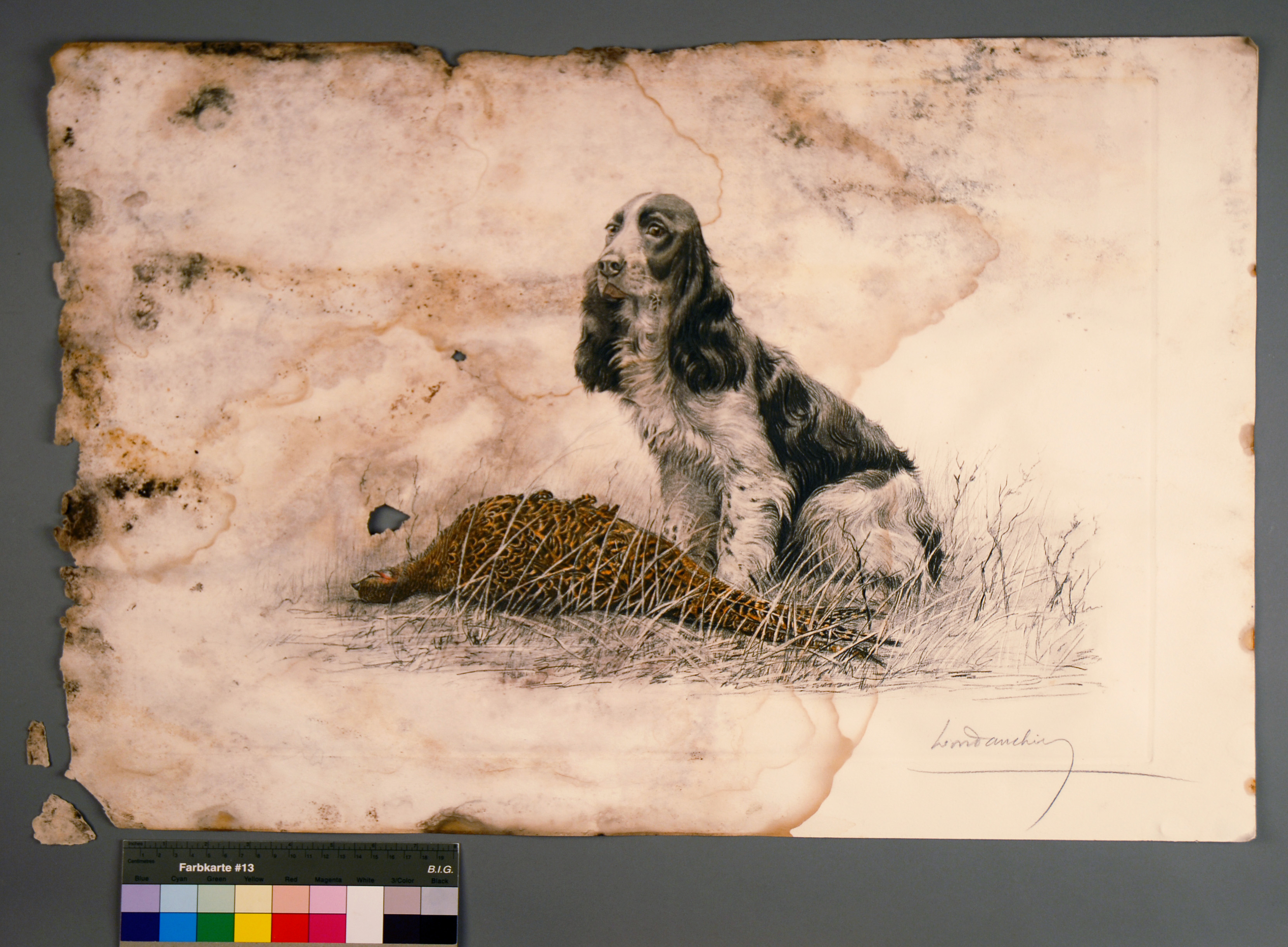Books, prints, drawings, watercolours, engravings as well as all other works of art based on paper are very susceptible to fungal biodeterioration processes due to their organic composition and hygroscopicity. Biodeterioration caused by mould is a major problem that affects paper based collections in museum, archives and libraries all over the world.

Resumo Integral:
Books, prints, drawings, watercolours, engravings as well as all other works of art based on paper are very susceptible to fungal biodeterioration processes due to their organic composition and hygroscopicity. Biodeterioration caused by mould is a major problem that affects paper based collections in museum, archives and libraries all over the world. Fungi have the ability to decompose the paper materials, namely by the production of a variety of metabolites. These excreted substances and the fungal structures themselves are often coloured and interfere with the readability of the artefacts, diminishing their artistic and monetary value. The fungal debris can also contain allergenic and toxic compounds to humans, some of them carcinogenic. Even when the fungi are already dead, those harmful compounds still remain on the paper.
Consequently, the successful cleaning of fungal stains from paper documents and works of art is mandatory, not only for paper conservation but also from the human health point of view, being considered a priority by paper conservators.
Fungal stains can be divided into three main groups: various colour stains (e.g. yellow, purple, pink or green stains caused by a wide range of chemical compounds such as carotenoids, flavins or quinones; melanised stains (dark brown or black stains caused by melanin and foxing (small and round-shaped spots with reddish or yellowish brown colour resulting from the ageing and/or oxidation of fungal residues.
Currently the cleaning of fungal stains from paper artefacts is performed either by the use of bleaching agents, solvents, enzymes or laser ablation. However, all these methods have major drawbacks. Bleaching, for instance, it is not very efficient in some cases such as in melanised stains, can cause physicochemical damages on cellulose, and often, the reappearance of the stains is observed. Chemical cleaning with solvents is usually ineffective and presents several risks such as the dissolution of other paper components like writing or art media. Moreover, most of the solvents are toxic and can pose health risks to the conservator. The use of enzymes presents several problems, like loss of activity with time and lack of effectiveness on melanised stains. Furthermore, this type of cleaning can cause damages on paper fibres and the enzyme residues will accumulate in the substrate if not properly removed. Laser cleaning, although not leaving chemical residues, can cause severe discoloration and degradation of the cellulose fibers. Also, the application of this method is not very practical due to the difficulty in accessing such an expensive technique.
Therefore, there is an urgent need of a solution that is effective in removing the fungal stains without causing any damage to the paper document or artwork. This new method should simultaneously be non-toxic, environmentally friendly and easy to apply. In this project we envisioned a new methodology for cleaning fungal stains in paper that will be a major breakthrough in this area and meet all the above requirements. The project activities will encompass four phases: identification of the paper stains and the respective fungal flora; synthesis of fungal stains removal compounds; testing the effect of the developed compounds on the properties of different papers and media; and testing their effectiveness on real case studies using antique documents and artworks or fac símilies.
Principal Investigator: Maria Filomena Macedo Dinis (FCT-UNL; VICARTE)
Research Units: VICARTE; CFE/FCT/UC; i3N|Cenimat
Participating Institutions: NOVA.ID.FCT; FCT-UNL; Fundação D. Luís I (FCL); UL; UC;
Team Members: António Manuel Santos Carriço Portugal (UC); Ana Cannas (DGLAB); Catarina Alfaro (FCL); Conceição Casanova (UL); Daniela Melo (FCT-UNL); Hugo Carvalho (UC); Maria Helena Casimiro (C2TN-UL; Marta C. Corvo (FCT-UNL); Nuno Mesquita (UC); Paula Aparício (FDL); Sílvia Sequeira (FCT-UNL); Tiago Paiva (FCT-UNL).
Funding: PTDC/EPH-PAT/0224/2014